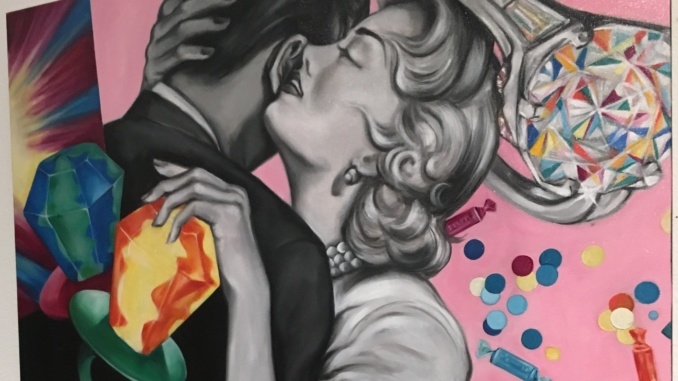
By Grace Dietz
Online Arts Editor
ShockBoxx’s latest exhibit, “Hungry” inspired with vibrant pieces of art that compelled people to rethink everything they know about eating disorders. The exhibit highlighted the struggles that women face every day with eating disorders and the degrading effects that come from them.
The exhibit explores the stereotypes placed onto women regarding their body types. The influential messages of loneliness and heartbreak, which are caused by body expectations society places on women, made the art show one of a kind.
“Hungry” which ran from Apr. 7 to 25, thoroughly dealt with the concept of eating disorders through various forms of art, such as drawings, mixed media, paintings, photography, assemblage and sculptures.
Artists of various ages submitted work for “Hungry.” ShockBoxx donated 30% of all sales from the exhibit to the South Bay Eating Disorder Coalition.
One specific drawing incorporated in “Hungry” powerfully expressed the stress that modern-day women have to face when it comes to their physical appearances. In this drawing, an object that depicted the world was placed on a woman’s back, signifying the weight of the world that women have to carry due to stereotypes placed on them and their bodies. This artwork successfully gave significant insight into the everyday lives of women who struggle with their physical appearance and helped viewers to comprehend the stress placed onto them by society.
Another piece featured in the exhibit depicted dark figures surrounding a woman who was huddled in a corner, symbolizing the darkness and loneliness that women feel when they have eating disorders. This emotional painting is a gloomy highlight of women’s struggles that helped to create a remarkably sincere gallery emphasizing the painful experiences that women with eating disorders face on a regular basis.
“Hungry” further examined eating disorders and the pain that they cause women with a sculpture that depicted hands with puppet strings attached to them. This piece effectively demonstrated the ways some women feel like they are controlled by their eating disorders and they must act a certain way in order to feel accepted by society. Nevertheless, the puppet’s hands symbolized the fact that women with eating disorders don’t feel that they have control of their own lives, which added an honest and realistic element to the exhibit.
“Hungry” focused entirely on women and their body image issues, however not a single piece was dedicated to the struggles that men face when dealing with eating disorders. Besides being a truly emotional and powerful art display, the exhibit could have been more inclusive by incorporating men’s struggles as well.
“Hungry” impressed viewers with high-quality art and a magnificent variety of artwork. The emotional messages of the included art made for a truly genuine and insightful experience into the lives of women who struggle with eating disorders.
For information on art sales and future exhibits, visit ShockBoxx’s website at www.shockboxxproject.com.





Leave a Reply